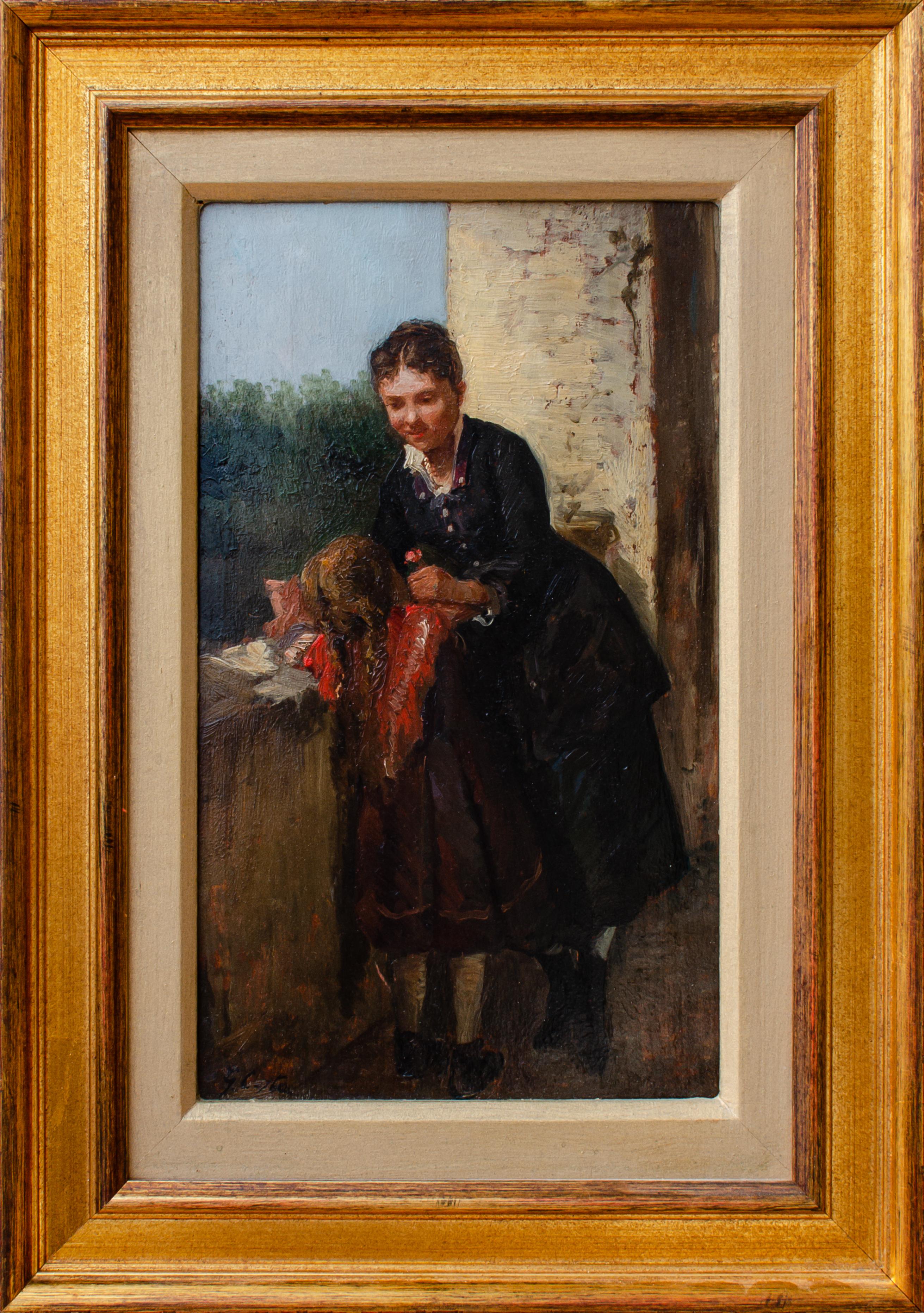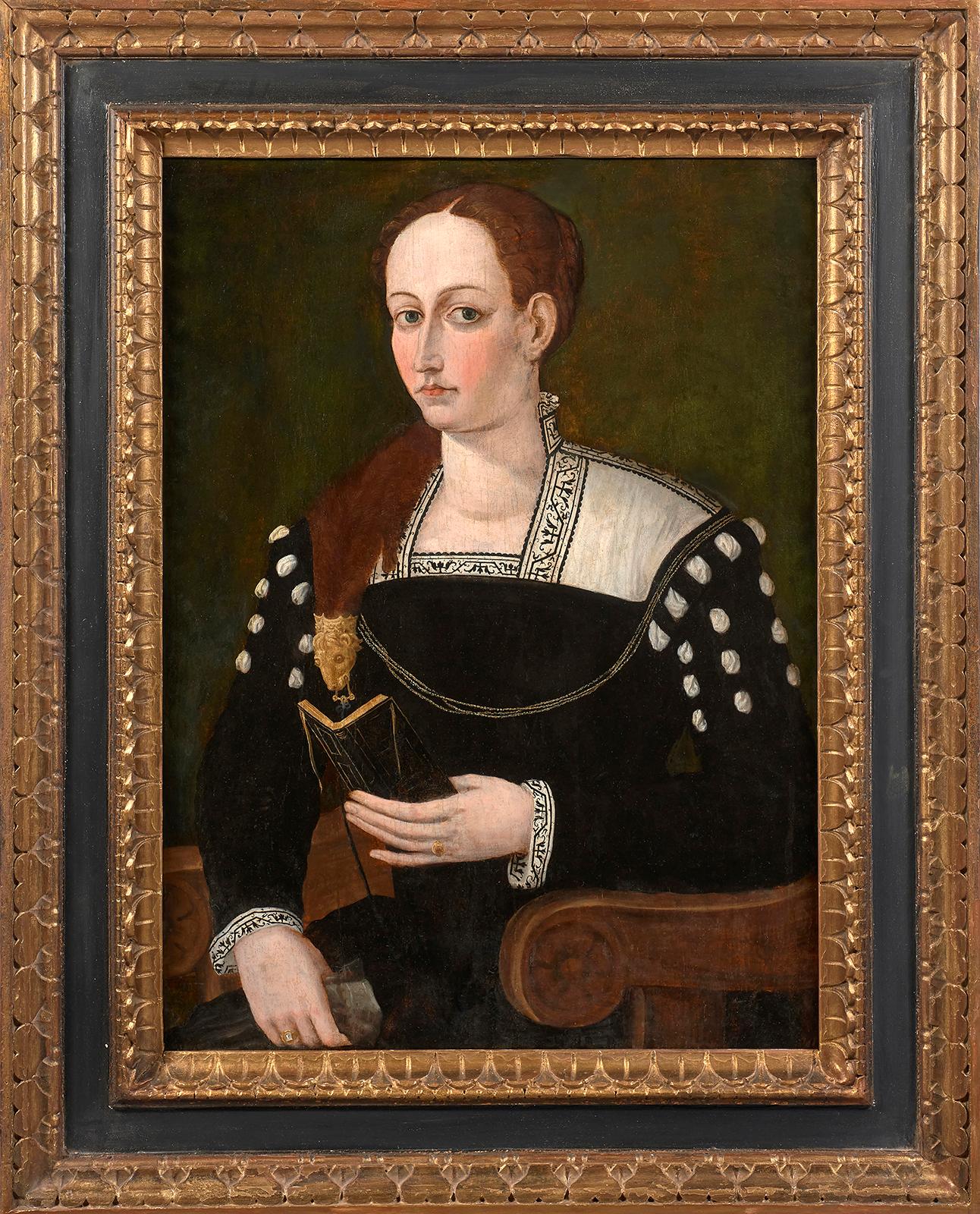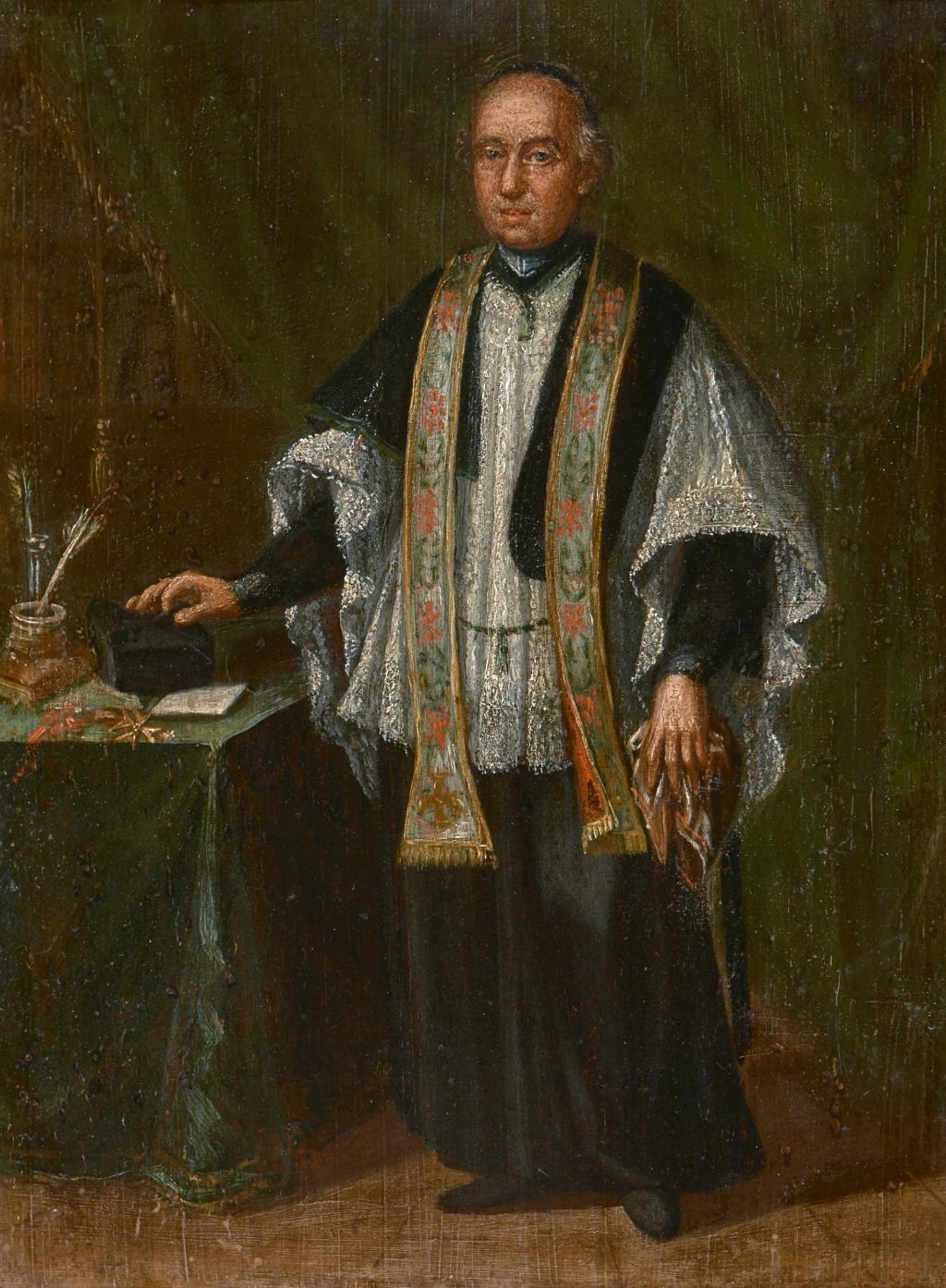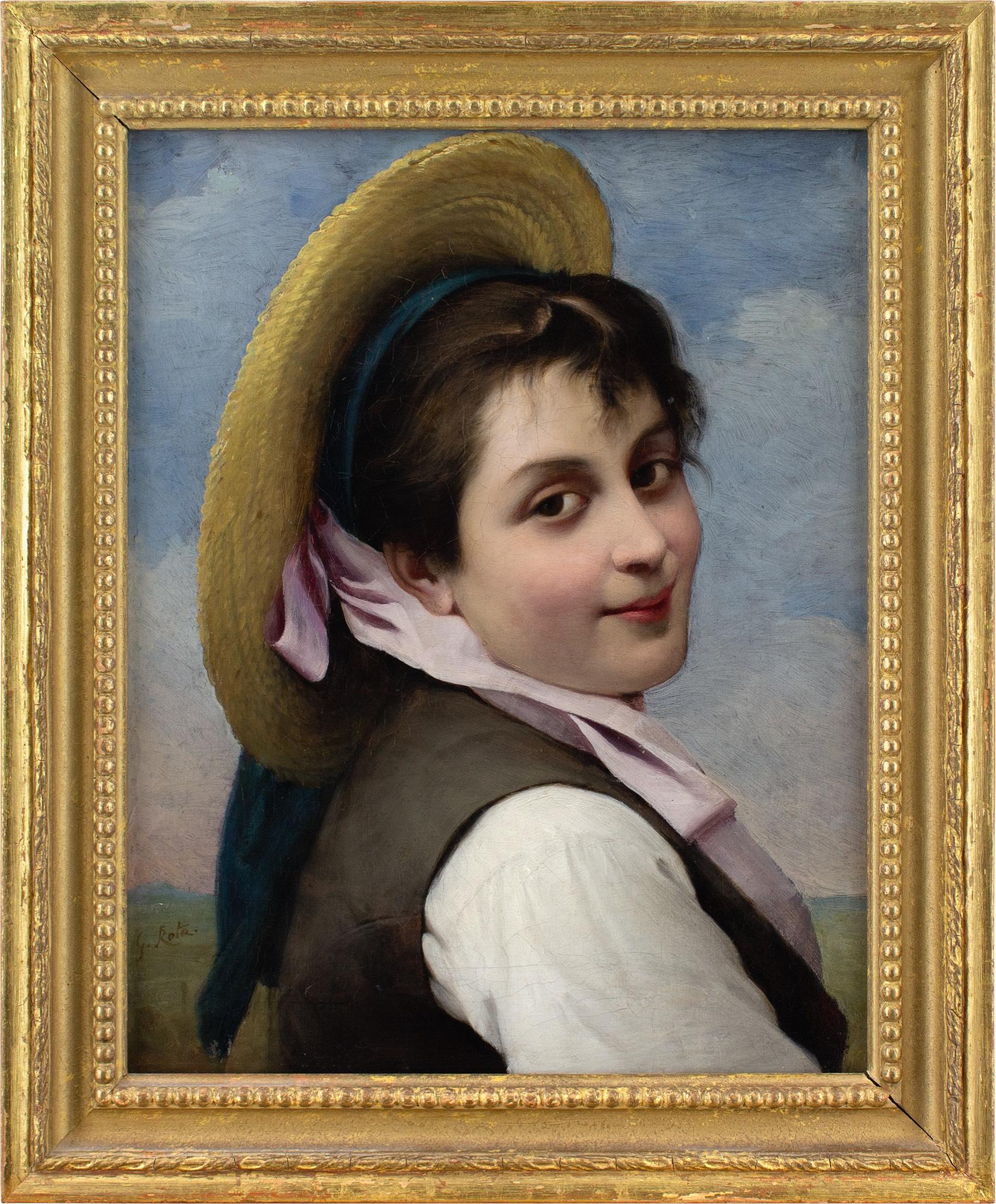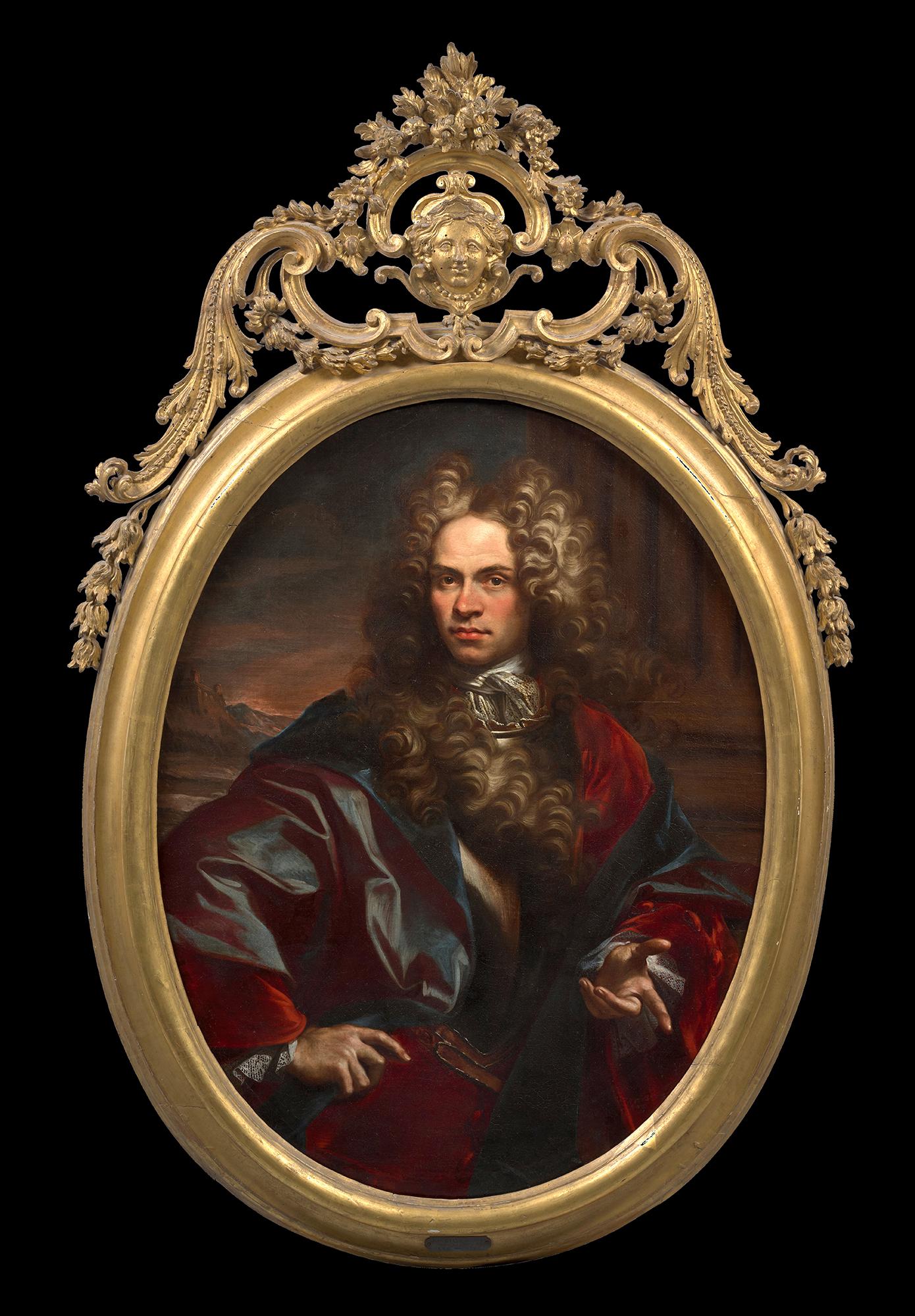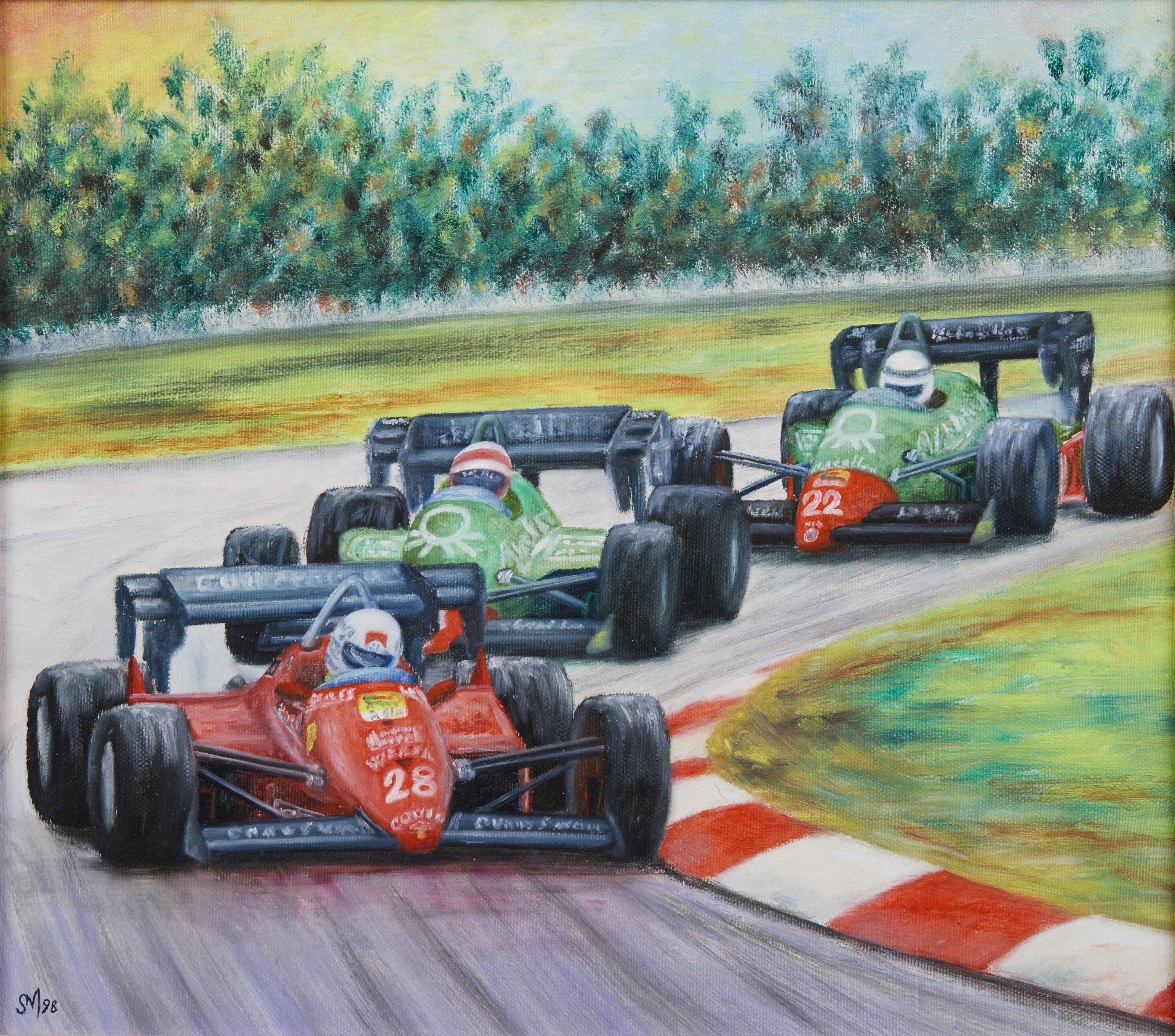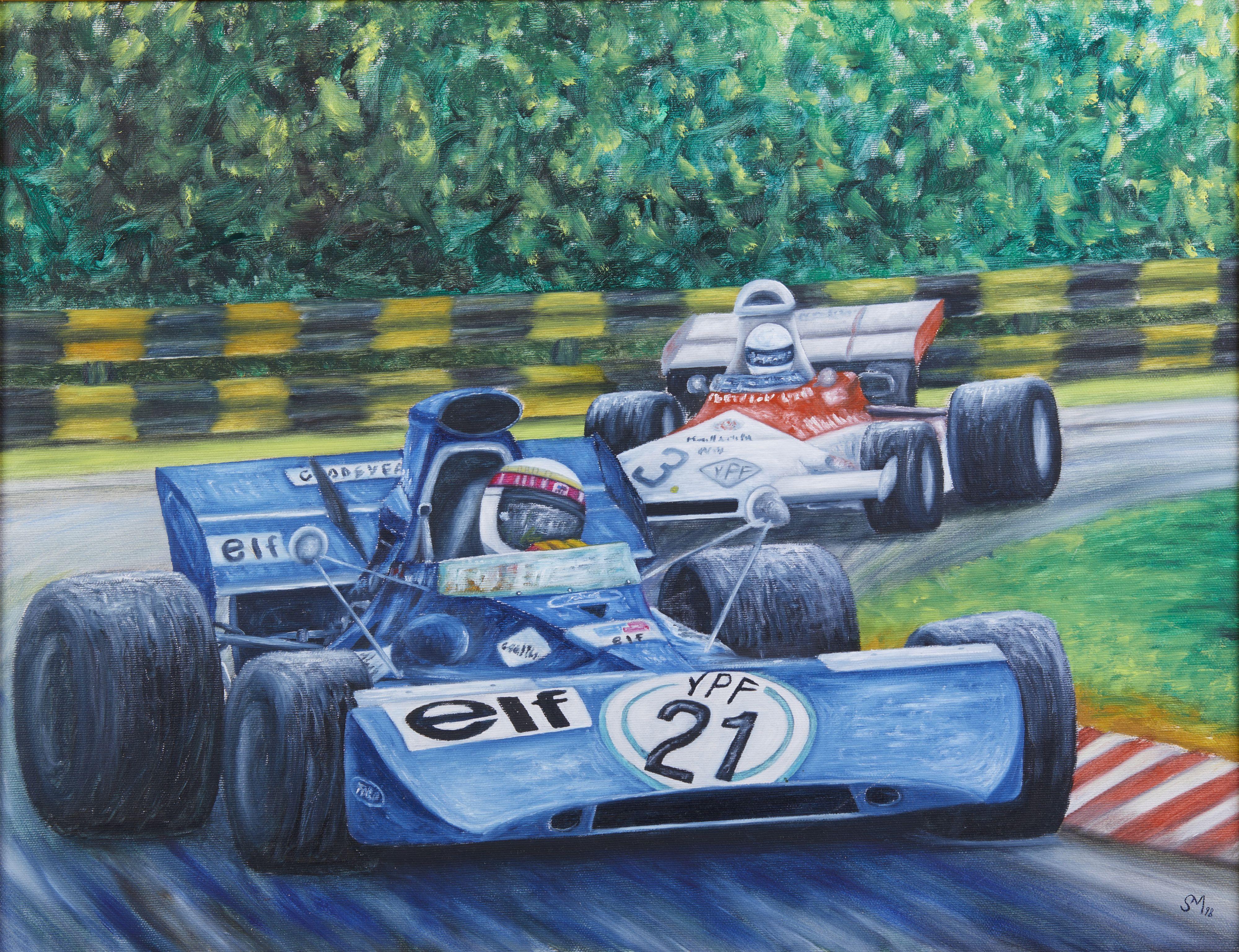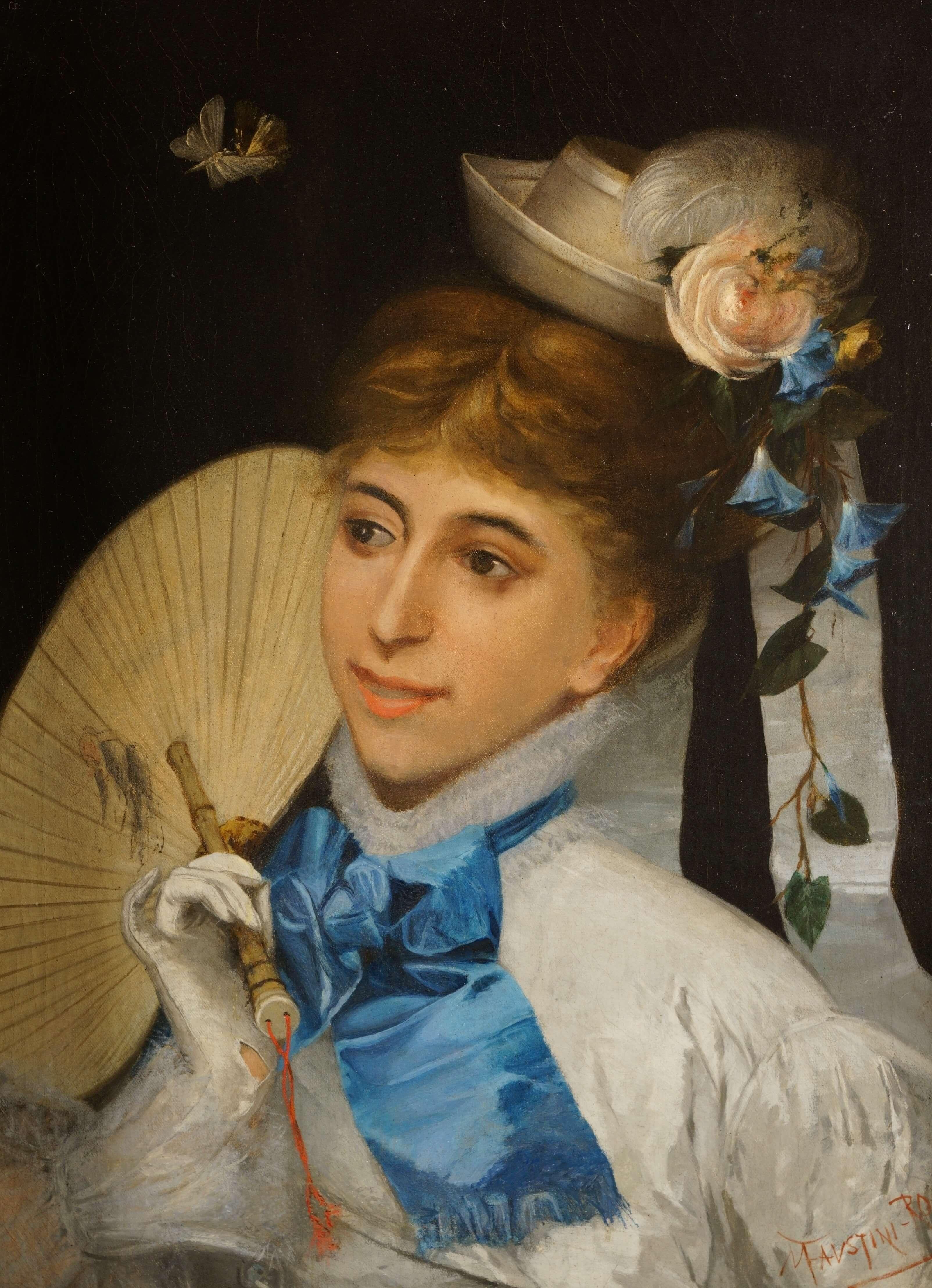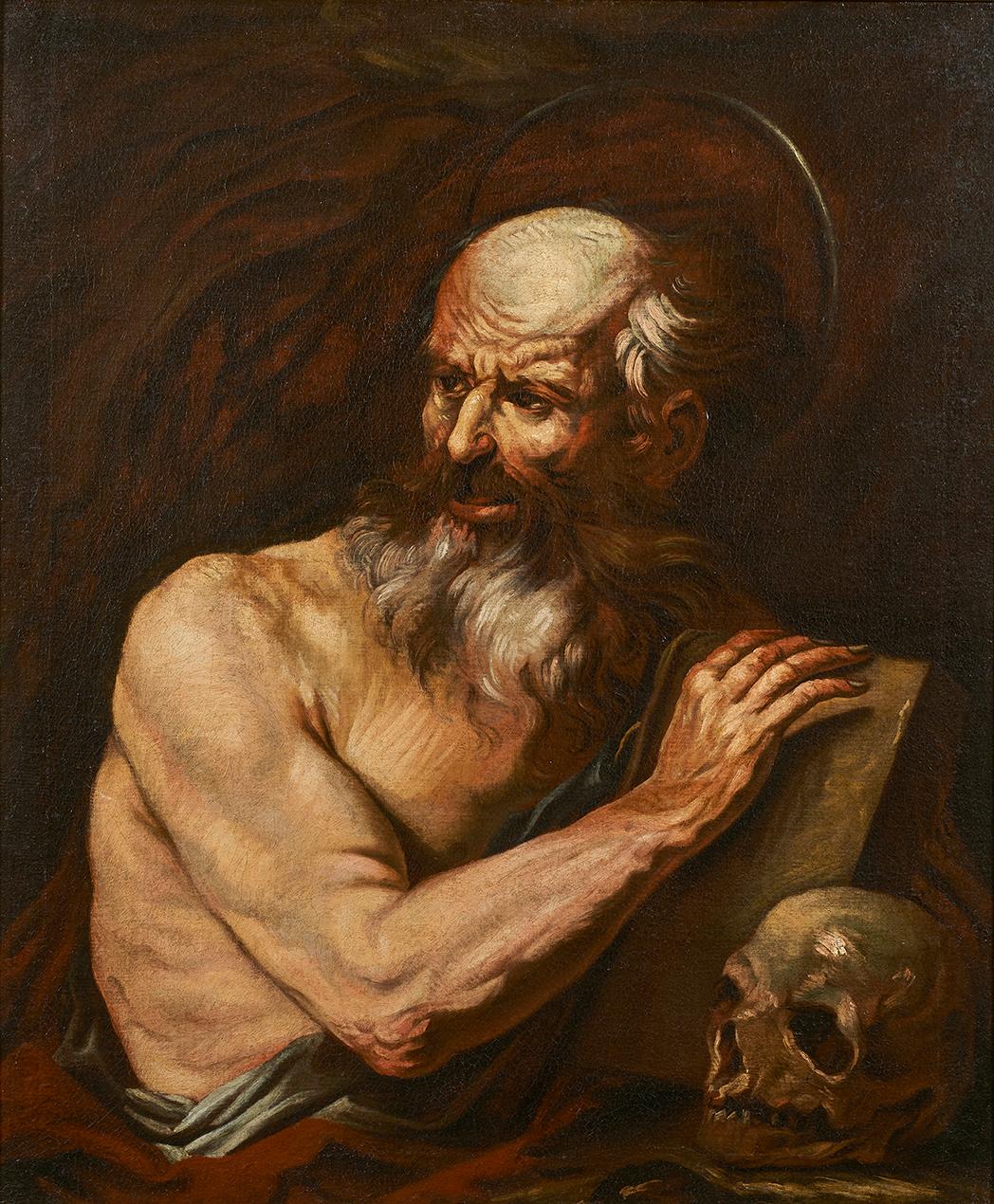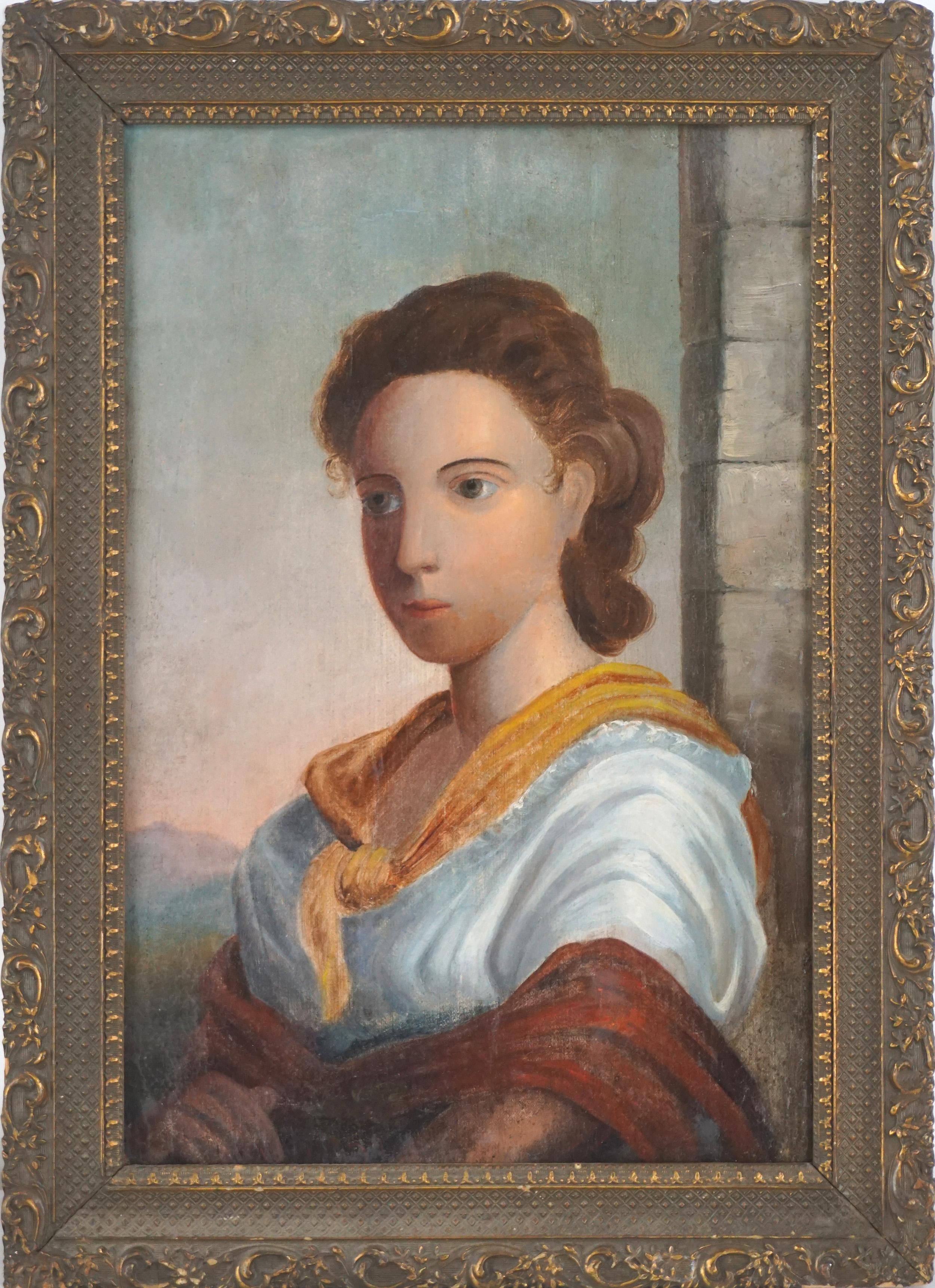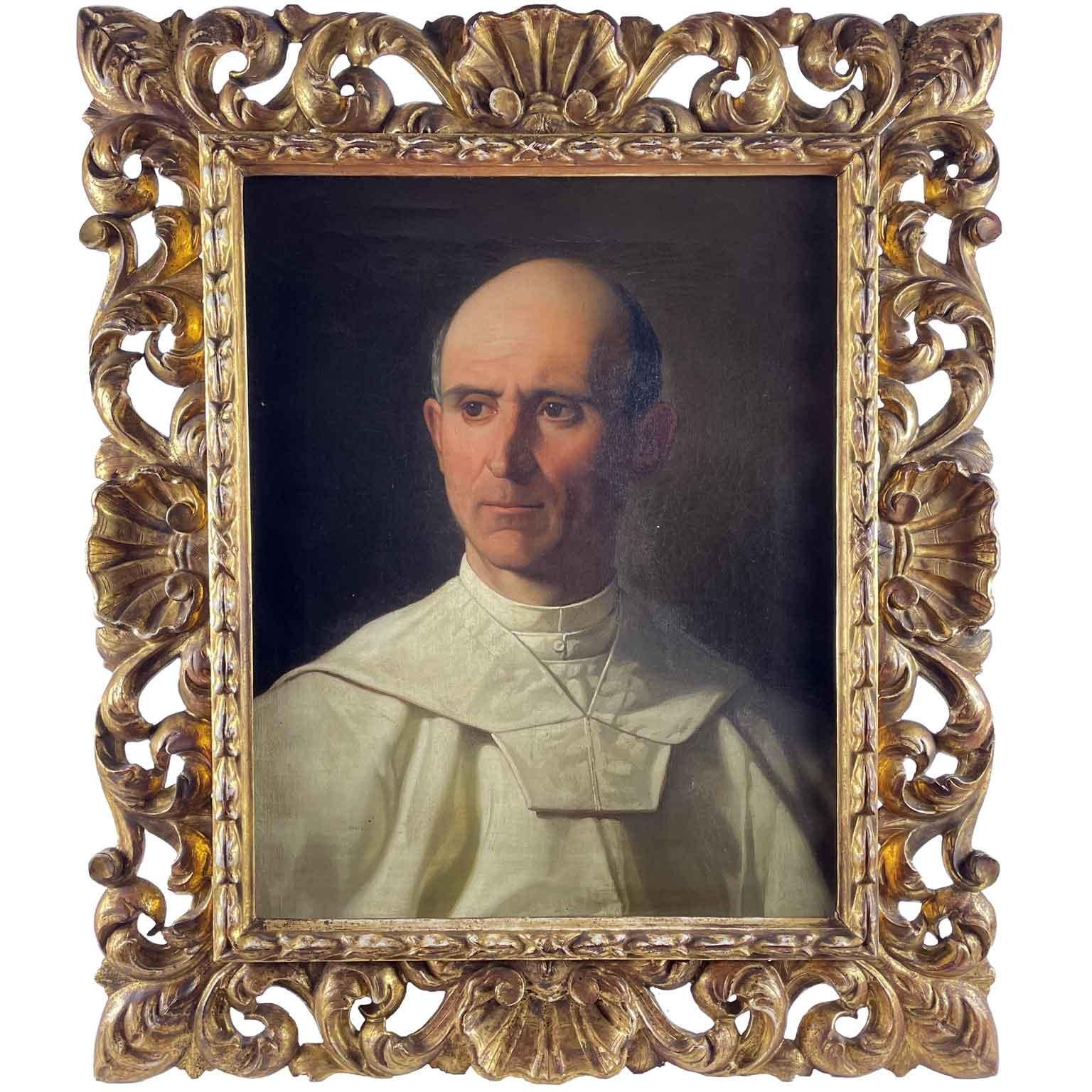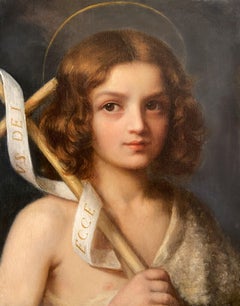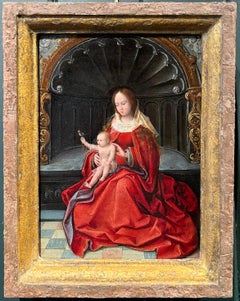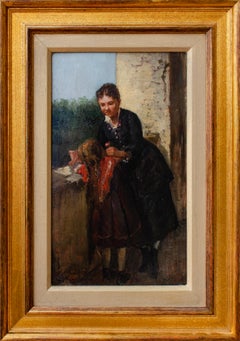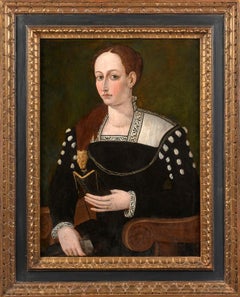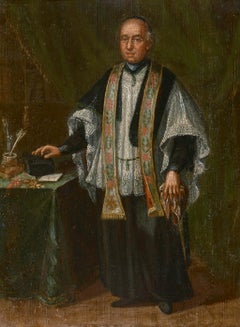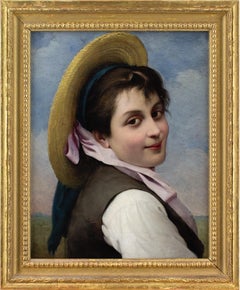Christ as a Boy
View Similar Items
Want more images or videos?
Request additional images or videos from the seller
1 of 5
Christ as a Boy
About the Item
- Dimensions:Height: 16 in (40.64 cm)Width: 12.25 in (31.12 cm)
- Medium:
- Movement & Style:
- After:Francesco Bonsignori (1455 - 1519, Italian)
- Period:
- Condition:
- Gallery Location:London, GB
- Reference Number:1stDibs: LU52415815142
About the Seller
5.0
Vetted Professional Seller
Every seller passes strict standards for authenticity and reliability
Established in 2007
1stDibs seller since 2014
80 sales on 1stDibs
Typical response time: 3 hours
Authenticity Guarantee
In the unlikely event there’s an issue with an item’s authenticity, contact us within 1 year for a full refund. DetailsMoney-Back Guarantee
If your item is not as described, is damaged in transit, or does not arrive, contact us within 7 days for a full refund. Details24-Hour Cancellation
You have a 24-hour grace period in which to reconsider your purchase, with no questions asked.Vetted Professional Sellers
Our world-class sellers must adhere to strict standards for service and quality, maintaining the integrity of our listings.Price-Match Guarantee
If you find that a seller listed the same item for a lower price elsewhere, we’ll match it.Trusted Global Delivery
Our best-in-class carrier network provides specialized shipping options worldwide, including custom delivery.More From This Seller
View AllChrist as a Boy
Located in London, GB
Attributed to Francesco Bonsignori
Italian 1455-1519
Christ as a Boy
Oil on wood panel
Image size: 12 1/4 x 16 inches (31 x 40.5 cm)
Original gilt frame
In this painting on panel, ...
Category
16th Century Italian School Portrait Paintings
Materials
Oil, Wood Panel
St John the Baptist as a Child, Early 19th Century Italian School, Oil Painting
Located in London, GB
Oil on canvas
Image size: 15 x 19 inches (38 x 48.25 cm)
Handmade gilt pierced frame
This is a beautiful early 19th Century Italian Old Master oil painting with the subject matter ...
Category
Early 19th Century Italian School Portrait Paintings
Materials
Canvas, Oil
The Virgin and Child Enthroned
Located in London, GB
Studio of Adriaen Isenbrandt
1510 - 1551
The Virgin and Child Enthroned
Oil on oak panel, wax seal verso
Image size: 10 3/4 x 8 inches (27 x 20.5 cm)
Contemporary style frame (image below)
POA
Provenance
Collection of Mrs Marianne Hudson
Mary, holding Jesus in her arms, is centrally positioned against a gold detailed architectural backdrop, reflecting the traditional iconography of the enthroned Virgin and Child. This composition suggests the theme of “Maestà” or “Majesty,” emphasising the figures religious significance.
In the painting from the studio of Adriaen Isenbrandt, the artist masterfully infuses the scene with rich symbolism and hidden meanings that reflect the cultural and religious context of the period. The infant Christ, seated on the Virgin Mary’s lap, is draped in a delicate, translucent white garment that symbolises his purity. In his hand, he clutches a piece of coral, a multifaceted symbol representing immortality, youth, and health. Notably, coral was also a common teething tool during that era, adding another layer of contemporary relevance.
A scarlet-headed blackbird, native to South America, perches gracefully on Christ’s outstretched finger. This bird is a potent symbol of creation and protection, enhancing the divine narrative of the scene. Mary, with a tender and loving gesture, caresses Christ’s back while gazing adoringly at her son, underscoring her role as the nurturing mother of God.
Mary is centrally positioned within an architectural alcove, which subtly suggests a heavenly halo without explicitly depicting one. The alcove’s niches, traditionally used to emphasise the importance of sculptures, further highlight her significance. She is adorned in a voluminous red gown, with the undulating folds of the fabric accentuated by white highlights. The red colour of her dress symbolises maternal qualities, while the iridescent blue undercoat, visible in certain areas, signifies sanctity and purity due to its rarity and expense at the time.
Moreover, Mary is depicted as the epitome of contemporary Medieval...
Category
16th Century Dutch School Portrait Paintings
Materials
Oil, Wood Panel
Price Upon Request
Portrait of William Herbert, 3rd Earl of Pembroke, Early 17th Century Portrait
Located in London, GB
English School, (circa 1600)
Portrait of William Herbert, 3rd Earl of Pembroke
Oil on panel, oval
Image size: 29¼ x 23⅞ inches
Painted wooden frame
Provenance:
176, Collection of Francis Greville, 1st Earl of Warwick.
The Trustees of the Lord Brooks’ Settlement, (removed from Warwick Castle).
Sotheby’s, London, 22nd March 1968, lot 81.
Painted onto wooden panel, this portrait shows a dark haired gentleman in profile sporting an open white shirt. On top of this garments is a richly detailed black cloak, decorated with gold thread and lined with a sumptuous crimson lining. With the red silk inside it’s all very expensive and would fall under sumptuary laws – so this is a nobleman of high degree.
It’s melancholic air conforms to the contemporary popularity of this very human condition, evident in fashionable poetry and music of the period. In comparison to our own modern prejudices, melancholy was associated with creativity in this period.
This portrait appeared in the earliest described list of pictures of Warwick castle dating to 1762. Compiled by collector and antiquary Sir William Musgrave ‘taken from the information of Lord & Lady Warwick’ (Add. MSS, 5726 fol. 3) is described;
‘8. Earl of Essex – an original by Zuccharo – seen in profile with black hair. Holding a black robe across his breast with his right hand.’
As tempting as it is to imagine that this is a portrait of Robert Devereux, the 2nd Earl Essex, we might take this with a pinch of salt. Its identification with this romantic and fatal Elizabethan might well have been an attempt to add romance to Warwick Castle’s walls. It doesn’t correspond all that well with Essex’s portraits around 1600 after his return from Cadiz. Notably, this picture was presumably hung not too far away from the castle’s two portraits of Queen Elizabeth I. The first, and undoubtedly the best, being the exquisite coronation portrait that was sold by Lord Brooke in the late 1970s and now hangs in the National Portrait Gallery. The second, described as being ‘a copy from the original at Ld Hydes’, has yet to resurface.
The portrait eventually ended up being hung in the State Bedroom of Warwick Castle.
Archival documents present one other interesting candidate. The Greville family’s earliest inventory of paintings, made in 1630 at their home Brooke House in Holborn, London, describes five portraits of identified figures. All five belonged to the courtier, politician and poet Sir Fulke Greville (1554-1628), 1st Baron Brooke, and were hung in the ‘Gallerie’ of Brooke House behind yellow curtains. One of them was described as being of ‘Lord of Pembrooke’, which is likely to have been William Herbert (1580-1630), 3rd Earl of Pembroke. William was the eldest son of Greville’s best friend’s sister Mary Sidney, and was brought up in the particularly literary and poetically orientated household which his mother had supported. Notably, the 3rd Earl was one of the figures that Shakespeare’s first folio was dedicated to in 1623.
The melancholic air to the portrait corresponds to William’s own pretensions as a learned and poetic figure. The richness of the robe in the painting, sporting golden thread and a spotted black fabric, is indicative of wealth beyond that of a simple poet or actor. The portrait’s dating to around the year 1600 might have coincided with William’s father death and his own rise to the Pembroke Earldom. This period of his life too was imbued with personal sadness, as an illicit affair with a Mary Fitton had resulted in a pregnancy and eventual banishment by Elizabeth I to Wilton after a short spell in Fleet Prison. His illegitimate son died shortly after being born. Despite being a close follower of the Earl of Essex, William had side-stepped supporting Devereux in the fatal uprising against the Queen and eventually regained favour at the court of the next monarch James I.
His linen shirt is edged with a delicate border of lace and his black cloak is lined on the inside with sumptuous scarlet and richly decorated on the outside with gold braid and a pattern of embroidered black spots.
Despite the richness of his clothes, William Herbert has been presented in a dishevelled state of semi-undress, his shirt unlaced far down his chest with the ties lying limply over his hand, indicating that he is in a state of distracted detachment. It has been suggested that the fashion for melancholy was rooted in an increase in self-consciousness and introspective reflection during the late 16th and early 17th centuries.
In contemporary literature melancholy was said to be caused by a plenitude of the melancholy humor, one of the four vital humors, which were thought to regulate the functions of the body. An abundance of the melancholia humor was associated with a heightened creativity and intellectual ability and hence melancholy was linked to the notion of genius, as reflected in the work of the Oxford scholar Robert Burton, who in his work ‘The Anatomy of Melancholy’, described the Malcontent as ‘of all others [the]… most witty, [who] causeth many times divine ravishment, and a kind of enthusiamus… which stirreth them up to be excellent Philosophers, Poets and Prophets.’ (R. Burton, The Anatomy of Melancholy, London, 1621 in R. Strong, ‘Elizabethan Malady: Melancholy in Elizabethan and Jacobean Portraits’, Apollo, LXXIX, 1964).
Melancholy was viewed as a highly fashionable affliction under Elizabeth I, and her successor James I, and a dejected demeanour was adopted by wealthy young men, often presenting themselves as scholars or despondent lovers, as reflected in the portraiture and literature from this period. Although the sitter in this portrait is, as yet, unidentified, it seems probable that he was a nobleman with literary or artistic ambitions, following in the same vain as such famous figures as the aristocratic poet and dramatist, Edward de Vere...
Category
Early 17th Century Old Masters Portrait Paintings
Materials
Oil, Wood Panel
Portrait of a Gentleman, 17th Century Dutch Old Masters Oil
Located in London, GB
Circle of Gerard van Honthorst
1592 - 1656
Portrait of a Gentleman
Oil on wooden panel
Image size: 29 x 23 inches
Contemporary gilt frame
Gerard van Honthorst was a Dutch Golden Age...
Category
17th Century Old Masters Portrait Paintings
Materials
Oil, Wood Panel
Portrait of Nicholas Poyntz
Located in London, GB
Remigius Van Leemput
Portrait of Nicholas Poyntz
1607-1675
Oil on oak panel
Image size: 13 x 10 1/4 inches (33 x 26 cm)
Contemporary style frame
Provenance
The Dalva Brothers Colle...
Category
17th Century Flemish School Portrait Paintings
Materials
Oil, Panel
You May Also Like
Mother and Daughter Italian School by Giuseppe Costa
Located in New York, NY
Giuseppe Costa (Italian, 1852-1912)
Untitled, c. late 19th-early 20th century
Oil on wood panel
12 x 7 in.
Framed: 16 1/2 x 11 2/3 x 1 in.
Signed lower right
Giuseppe Costa was an I...
Category
Late 19th Century Italian School Portrait Paintings
Materials
Oil, Wood Panel
Portrait of a woman with a book
Located in BELEYMAS, FR
Italian school circa 1560, circle of Bernardino Campi
Portrait of a woman with a book
Oil on panel
H. 78 cm ; L. 57cm
Category
16th Century Italian School Portrait Paintings
Materials
Oil, Wood Panel
18th Century Venetian School Portrait of a Bishop Oil on Panel Green Brown Black
Located in Sanremo, IT
Painting oil on panel measuring 40 x 30 cm without frame and 48 x 38 with frame representing a great bishop of the Venetian school from the first half of the 18th century.
Very curi...
Category
Early 18th Century Italian School Portrait Paintings
Materials
Oil, Wood Panel
$1,088 Sale Price
20% Off
Giovanni Rota, Portrait Of A Girl In A Straw Hat
Located in Cheltenham, GB
This fine late 19th-century oil painting by Italian artist Giovanni Rota (1832-1900) depicts a cheerful young lady looking back over her shoulder with a straw hat and lilac ribbon.
...
Category
1880s Italian School Portrait Paintings
Materials
Canvas, Oil
Italian men portrait
By Giovanni Maria delle Piane dit Mulinaretto (Genoa 1670 - Monticelli d´Ongina 1745)
Located in BELEYMAS, FR
Giovanni Maria DELLE PIANE, known as IL MULINARETTO
(Genoa, 1660 – Monticelli d'Ongina, 1745)
Portrait of a man
Oil on oval canvas
H. 108 cm; L. 83 cm
Provenance: Nino Ferrari Colle...
Category
1740s Italian School Portrait Paintings
Materials
Canvas, Oil
19th Century Maurizio Scarpari Grand Prix Racing Cars Oil on Canvas
Located in Sanremo, IT
Painting, oil on canvas, measuring 55 x 65 cm without frame and 64 x 82 cm with frame, depicting two racing Ferraris, during a grand prix, by the painter Maurizio Scarpari, as can be...
Category
1990s Italian School Portrait Paintings
Materials
Canvas, Oil
Recently Viewed
View AllMore Ways To Browse
Sailing And Vintage Posters
Vintage Israel Jewelry
Vintage Prints Kids
Yellow Resin Sculpture
21 Numbers
Art On Paper 22x28 Inches
Bailey David
Coca Cola Vintage
Contemporary Bronze Bust
Death Nyc Prints
Early 20th Century Dog Paintings
English Cats
Face Veil
George W Bush Art
Hockney Etching
Japanese Print Ocean
Japanese Woodblock Large
Joan Miro 1974
